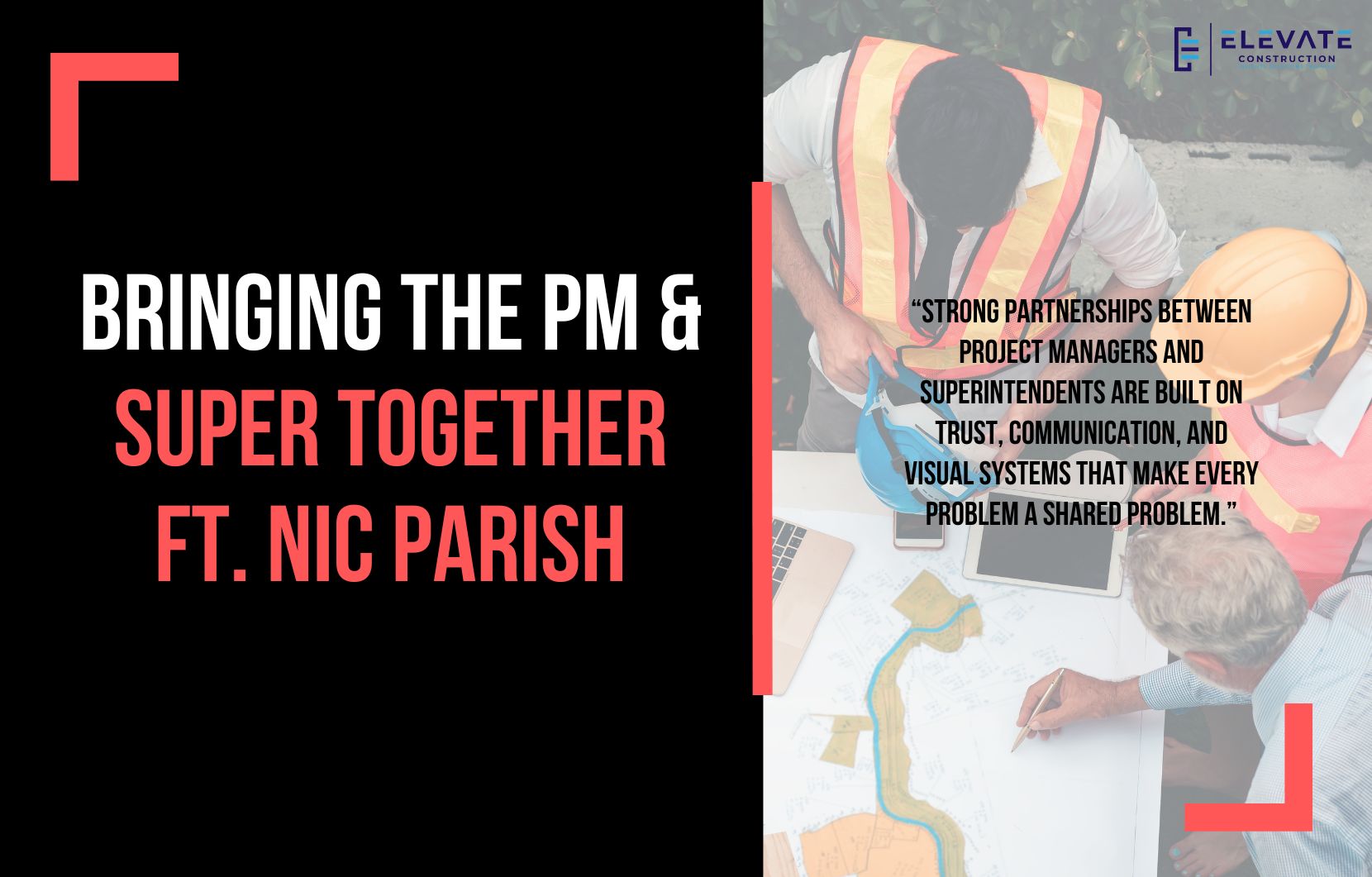Building Stronger Partnerships Between Project Managers and Superintendents
One of the most important dynamics on any construction project is the relationship between the project manager and the superintendent. These two roles hold immense responsibility. When they are aligned, projects flow smoothly and problems get solved quickly. When they are disconnected, tension builds, stress increases, and both sides end up blaming one another.
In my conversation with Nick Parrish, CEO of the Burns Group and leader of Burnster Construction, we explored what it really takes to create strong partnerships between project managers and superintendents. Nick described how these roles are often thought of as two players on the same team. They own the project together, but they hold different responsibilities. The key is not only recognizing that partnership but also finding practical ways to strengthen it.
Nick shared common frustrations that each role voices in the field. Superintendents sometimes view project managers as “office help” who only push schedules without understanding real-world conditions. They may complain about not getting the resources or materials they need. On the other hand, project managers often feel left in the dark, saying superintendents do not communicate enough or fail to provide input on schedules and procurement. Both sides end up reinforcing the other’s frustrations, creating a cycle of misalignment.
This tension makes sense if we look at it through the lens of human needs. People are driven by significance, certainty, variety, and connection. In construction, the environment can push both project managers and superintendents into survival mode. Contracts pit trades against one another, procurement systems break down, and both roles carry the stress of enormous responsibility. Without systems of connection and support, it is natural for them to protect their own significance by blaming the other.
But there is a better way. Just as a healthy marriage relies on communication and partnership, so does the PM-superintendent relationship. When the bond is weak, both sides can quickly start to see each other as enemies instead of partners. When the bond is strong, they tackle challenges together as a unified team.
So how do we create that bond? First, it requires a mindset shift. Every person on the project should be viewed as a customer. Just like Paul Akers once described cleaning an airplane restroom to protect the resource he valued, project managers and superintendents should see each other as assets who enable success. When a superintendent sees the PM not as “office help” but as someone who brings resources to the job, gratitude and cooperation replace blame. When a project manager sees the superintendent not as a complainer but as the person who makes everything come together in the field, the relationship deepens.
Second, we must improve communication systems. The old model of a superintendent keeping everything in their head no longer works. Everything must be visual and transparent. Schedules, procurement logs, delivery schedules, roadblocks, day plans, and weekly work should all be visible on the wall for the whole team to see. When communication is visual, blame disappears because the facts are out in the open.
Alongside visual systems, consistent personal connection is essential. Requiring superintendents and project managers to have lunch together every week may sound simple, but it builds trust and belonging. These conversations strengthen the bond so that when stress arises, they see each other as allies instead of adversaries. Daily or weekly huddles are another powerful tool. By checking in regularly, both roles can identify, discuss, and solve problems together before they spiral.
Nick and I also discussed how these principles align with frameworks like Maslow’s hierarchy of needs. When PMs and supers feel safe, connected, and respected, they can grow together and reach higher levels of mastery. Over time, they form a powerful duo capable of building remarkable projects while maintaining satisfaction in their work.
I like to think of it this way. The project manager’s role is to bring all the pieces to the jobsite, like delivering a full kit of Amazon packages. The superintendent’s role is to put those pieces together, orchestrating the trades into a cohesive team. Another perspective is that the project manager reads the client’s mind and feeds the project, while the superintendent sees the future. The superintendent uses tools like look ahead plans, weekly work plans, contract drawings, and field walks as a crystal ball to anticipate needs. When one role feeds the project and the other sees the future, everything falls into rhythm.
Of course, there will be rare cases where personalities simply clash and separation is necessary. But in nearly every situation, project managers and superintendents can succeed when they build connections, make communication visual, and commit to working as one team. The reward is not only smoother projects but also a stronger sense of fulfillment in their craft.
On we go.
Key Takeaway
Strong partnerships between project managers and superintendents are built on trust, communication, and visual systems that make every problem a shared problem.
If you want to learn more we have:
-Takt Virtual Training: (Click here)
-Check out our YouTube channel for more info: (Click here)
-Listen to the Elevate Construction podcast: (Click here)
-Check out our training programs and certifications: (Click here)
-The Takt Book: (Click here)
Discover Jason’s Expertise:
Meet Jason Schroeder, the driving force behind Elevate Construction IST. As the company’s owner and principal consultant, he’s dedicated to taking construction to new heights. With a wealth of industry experience, he’s crafted the Field Engineer Boot Camp and Superintendent Boot Camp – intensive training programs engineered to cultivate top-tier leaders capable of steering their teams towards success. Jason’s vision? To expand his training initiatives across the nation, empowering construction firms to soar to unprecedented levels of excellence.
On we go

